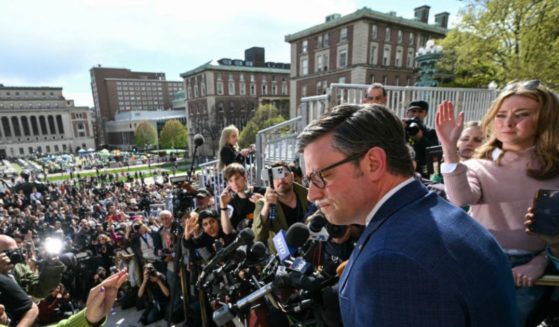The Important Message of America's National Monument to the Forefathers
During a recent visit to Plymouth, Massachusetts, I viewed the National Monument to the Forefathers. It’s a safe bet that most Americans, especially the youth of today, have never heard about this very special national monument honoring and symbolizing the labors, sacrifices, and sufferings of America’s 102 forefathers (Pilgrim men, women, and children) who landed at Plymouth in 1620.
Unlike their fellow Englishmen who landed at Jamestown, Virginia, in 1607 with an economic motivation, the Pilgrims came to the New World for civil and religious liberty. Nearly half of these people died from sickness and exposure during their first year in the New World.
The National Monument to the Forefathers is the largest solid granite monument in the United States, standing 81 feet in total height. Dedicated in 1889, The National Monument to the Forefathers is truly one of America’s most beautiful and meaningful monuments.
In 1974, the monument was added to the National Register of Historic Places by the National Park Service as having “exceptional value in commemorating and illustrating the history of the United States.” The monument is maintained by the Massachusetts Department of Conservation and Recreation with additional funding provided by Friends of the Forefathers, a 501(c)(3) non-profit public charity.
Due to its relatively remote location in Plymouth, literature describing the monument states that it is “Plymouth’s best kept secret” and that “everyone visits Plymouth Rock, but most people miss the statue erected in honor of those 102 brave souls who boarded the Mayflower with hopes for a better life in the New World.”
By studying the monument, much can be learned by young and old alike about the principles and virtues of the Pilgrim settlers. These principles and virtues were ultimately carried over into the writing of America’s Declaration of Independence and Constitution.
The basic message symbolized by the monument is that the ultimate success of the Pilgrims’ settlement was mainly due to their unwavering, deep Christian faith in God and his provision for them.
Thus, the tallest figure on the monument is the personification of faith who symbolizes the virtue which most inspired the Pilgrims’ journey to the New World. The right arm and hand of the faith figure is pointing upward toward God, and the left hand holds an open Christian Bible.
Surrounding and located below the faith figure are figures personifying four additional Pilgrim virtues which all stem from their overarching virtue of faith: morality, law, education of youth, and civil and religious liberty. The virtue of liberty, for example, is personified by a sitting figure of a warrior who has overcome the tyrant King of England who persecuted the Pilgrims for their deep religious beliefs.
The virtue of morality is personified as a woman holding a tablet of the Ten Commandments in her left hand and the scroll of Revelation in her right. The virtue of law is personified by a seated draped male figure holding a book (the Bible) with his chair supported by justice and mercy. The virtue of education is personified by a seated draped female figure pointing to a book (the Bible) in her lap with her chair supported by wisdom and youth.
In 2012, actor Kirk Cameron produced and released a 90-minute documentary movie entitled “Monumental” describing the hardships and faith of the early Pilgrim settlers both in Europe and at Plymouth. The documentary describes the monument in detail, including each of the above five virtues of the early Pilgrims. Cameron mentions in the film how emulation of these virtues can enable Americans today to return to the successful “virtue strategy” of the early Pilgrims.
Such a course of action is deemed essential to the survival of the American republic.
To enable millions of Americans, especially school age children and young adults, to view and learn from the symbols of Pilgrim virtues depicted on the National Monument to the Forefathers, I’d like to propose that state governments and/or private organizations in each of the 50 states develop plans to fund and build suitable replicas of the monument. Replicas might be half the scale, for example, of the original monument and made of materials other than granite stone.
Descriptive literature about the monument and each of the five important Pilgrim virtues also needs to be made available to the viewing public, especially school children. Funding from the federal government for this important and edifying project should also be pursued.
Due to the tremendous political divide in America today, I believe that America needs a resurgence of these early principles and virtues to enable the nation to continue as a thriving democratic republic. Allowing Americans of all ages living in each of the 50 states to view, study, and learn from suitable replicas of this important national monument would help lead that resurgence.
Paul S. Gardiner is an avid lover of America and a retired U.S. Army Lieutenant Colonel living in Hoschton, Georgia.
The views expressed in this opinion article are those of their author and are not necessarily either shared or endorsed by the owners of this website. If you are interested in contributing an Op-Ed to The Western Journal, you can learn about our submission guidelines and process here.
Truth and Accuracy
We are committed to truth and accuracy in all of our journalism. Read our editorial standards.











